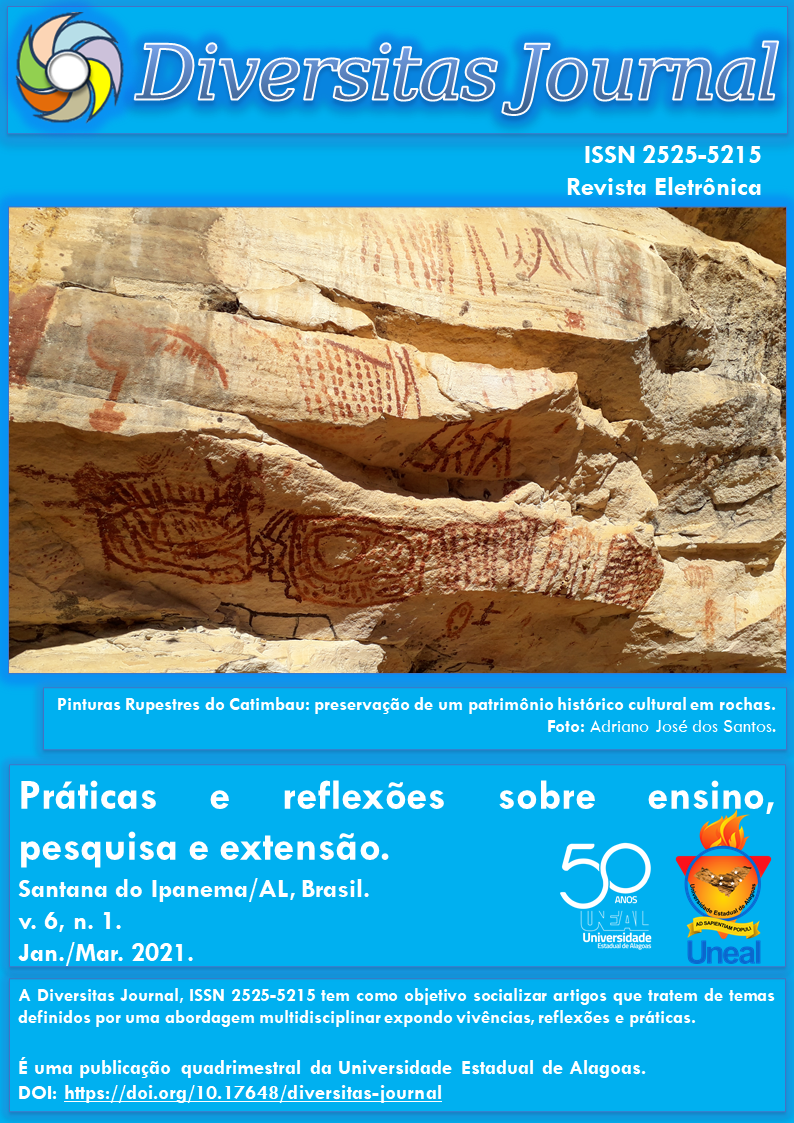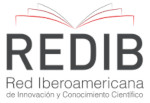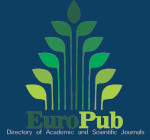Calendário da flora apícola para produtores no município de Major Izidoro, Alagoas
DOI:
https://doi.org/10.17648/diversitas-journal-v6i1-1700Abstract
ABSTRACT: Resource availability and bee production in a particular locality are directly related to the floristic cover of the grazing area around the area where the hives are located. Therefore, the present work aimed to collect and identify the native and exotic apiculture flora, which produces apiculture resources around the area of two apiaries in the municipality of Major Izidoro, as well as to collect phenological data and preferential specimens visited by bees (Apis mellifera L.), which will ultimately be instrumental in measuring the final production of apiaries and enabling producers to schedule their apiaries from the production of a beekeeping calendar for the municipality. The present study was conducted in two distinct apiaries located in Major Izidoro municipality, Sertão Alagoano. With regard to their flowering phenophases (Table 1) most species remained flowering all year round and most months such as: Jatropha mollissima (Pohl) Baill. (Pinhão) which maintained its flowering from January to December, Cleome spinosa Jacq. (Munssambé) from January to August/November to December, Croton heliotropiifolius Kunth (Velame) from January to July/December, Cnidoscolus urens (L.) Arthur (Nettle) from January to March/May to December. In contrast, there were species that maintained their flowering for only one month during observation: Commelina erecta L (Santa Luzia Eye) and Indigofera suffruticosa Mill. (Indigo). The shortage of flowers occurred in the months of January, February and December, consequently the production of honey tends to decrease. However, because most plants have flowering most months, they can be indicated as important food sources for the local apifauna.
KEYWORDS: beekeeping, native flora, northeastern Brazil, sustainable activity.
Metrics
References
AGUIAR, C. M. L. et al. Plantas visitadas por Apis mellifera L. (Hymenoptera, Apidae) em uma área de caatinga em Itatim, Bahia, Brasil. Ciências Biológicas, v. 2, n. 1/2, p. 29-33, 2002.
ALCOFORADO-FILHO, F. G.; SAMPAIO, E. V. S. B.; RODAL, M. J. N. Florística e fitossociologia de um remanescente de vegetação caducifólia espinhosa arbórea em Caruaru, Pernambuco. Acta Botânica Brasílica, Porto Alegre, v. 17, n. 2, p. 287-303, 2003.
ARAÚJO, K. D.; PARENTE, H. N.; SILVA, É. É.; RAMALHO, C. I.; DANTAS, R. T.; ANDRADE, A.P.; SILVA, D. S. Levantamento florístico do estrato arbustivo-arbóreo em áreas contíguas de Caatinga no Cariri Paraibano. Revista Caatinga, v. 23, n. 1, p. 63-70. 2010.
LARCHER, W. Ecofisiologia Vegetal. São Carlos: RiMa, 2000. 529 p.
LEMOS, J. R.; RODAL, M. J.N. Fitossociologia do componente lenhoso de um trecho da vegetação de caatinga no Parque Nacional Serra da Capivara, Piauí, Brasil. Acta Bot. Bras, v.16, n.1, p. 23-42. 2002.
LIMA, M. Flora apícola tem e muita: Um estudo sobre as plantas apícolas de Ouricuri -PE, Ouricuri-PE: Caatinga, 2003. 63p.
LOPES, C. G. R.; BEIRÃO, D. C. C.; PEREIRA, L. A.; ALENCAR L. C. Levantamento da flora apícola em área de cerrado no município de Floriano, Estado do Piauí, Brasil. Revista Brasileira de Biociências, v. 14, n. 2, 2016.
PRAUSE, J.; ANGELONI, P. Fenología de especies forestales nativas: abscisión de hojas. Chaco: Universidad Nacional del Nordeste: Comunicaciones Científicas y Tecnológicas, 2000. Disponível em: <http://www1.unne.edu.ar/cyt/2000/5_agrarias/a_ pdf/a_058.pdf>. Acesso em: Janeiro de 2019.
REIS-NETO, S. A. et al. Levantamento de espécies vegetais apícolas em São Luís -MA. Pesquisa em Foco, v. 10, n. 2, p. 37-45, 2002.
SANTOS, R. F. et al. Levantamento da Flora Melífera de interesse apícola no municípiode Petrolina-PE. Revista Caatinga, v. 19, n. 3, p. 221-227, 2006.
SOUZA, J. A. N.; RODAL, M. J. N. Levantamento florístico em trecho de vegetação ripária de caatinga no rio Pajeú, Floresta, Pernambuco-Brasil. Revista Caatinga, v. 23, n. 4, p. 54-62, 2010.
WOLFF, L. F.; LOPES, M. D. R.; PEREIRA, F. D. M.; CAMARGO, R. C. R.; & NETO, J. M. V. (2006). Localização do apiário e instalação das colmeias. Embrapa Meio-Norte.
Downloads
Published
How to Cite
Issue
Section
License
Copyright (c) 2021 Cézar Augusto Tavares Alves, Maria do Carmo Carneiro

This work is licensed under a Creative Commons Attribution 4.0 International License.
The Diversitas Journal expresses that the articles are the sole responsibility of the Authors, who are familiar with Brazilian and international legislation.
Articles are peer-reviewed and care should be taken to warn of the possible incidence of plagiarism. However, plagiarism is an indisputable action by the authors.
The violation of copyright is a crime, provided for in article 184 of the Brazilian Penal Code: “Art. 184 Violating copyright and related rights: Penalty - detention, from 3 (three) months to 1 (one) year, or fine. § 1 If the violation consists of total or partial reproduction, for the purpose of direct or indirect profit, by any means or process, of intellectual work, interpretation, performance or phonogram, without the express authorization of the author, the performer, the producer , as the case may be, or whoever represents them: Penalty - imprisonment, from 2 (two) to 4 (four) years, and a fine. ”















.png)




